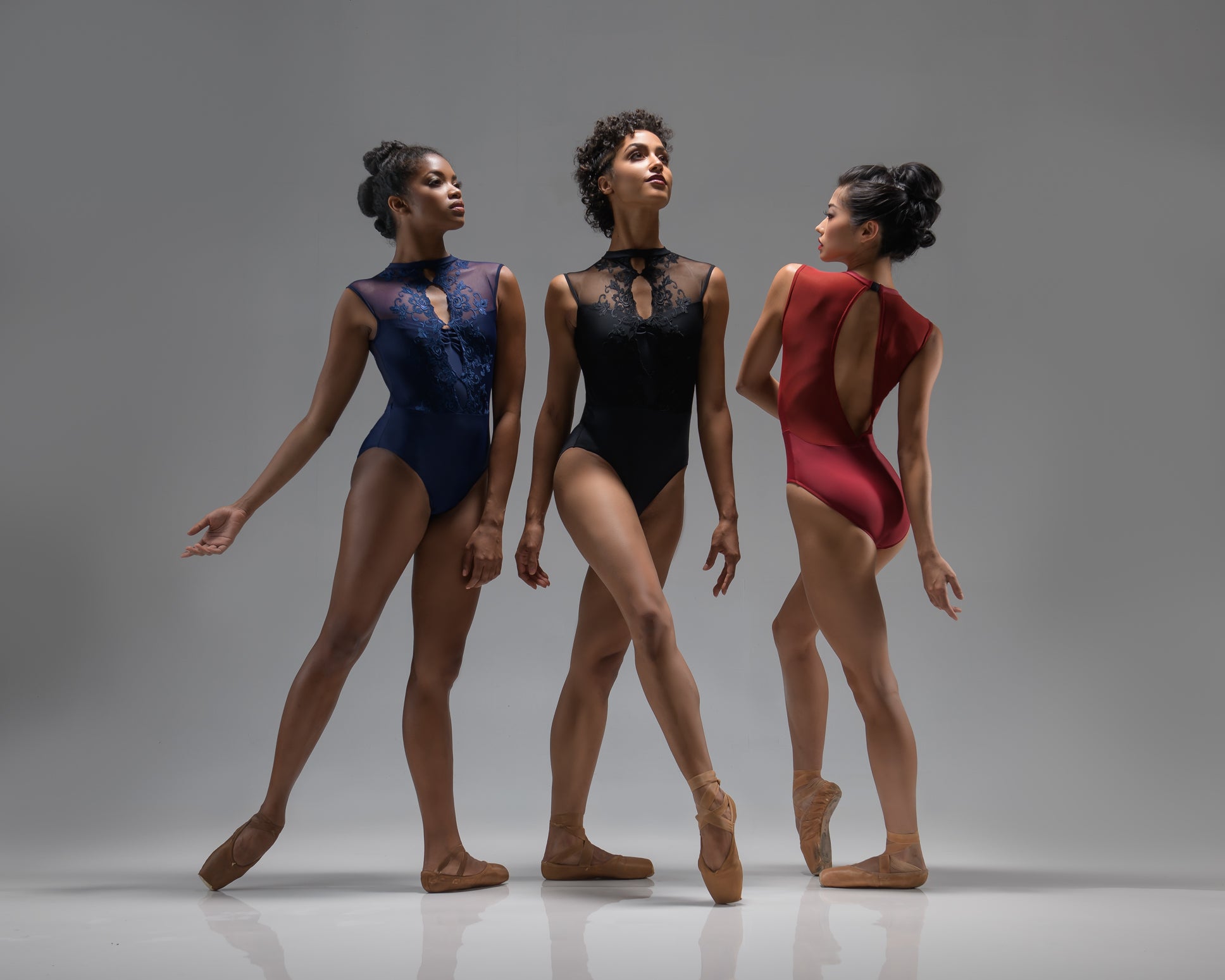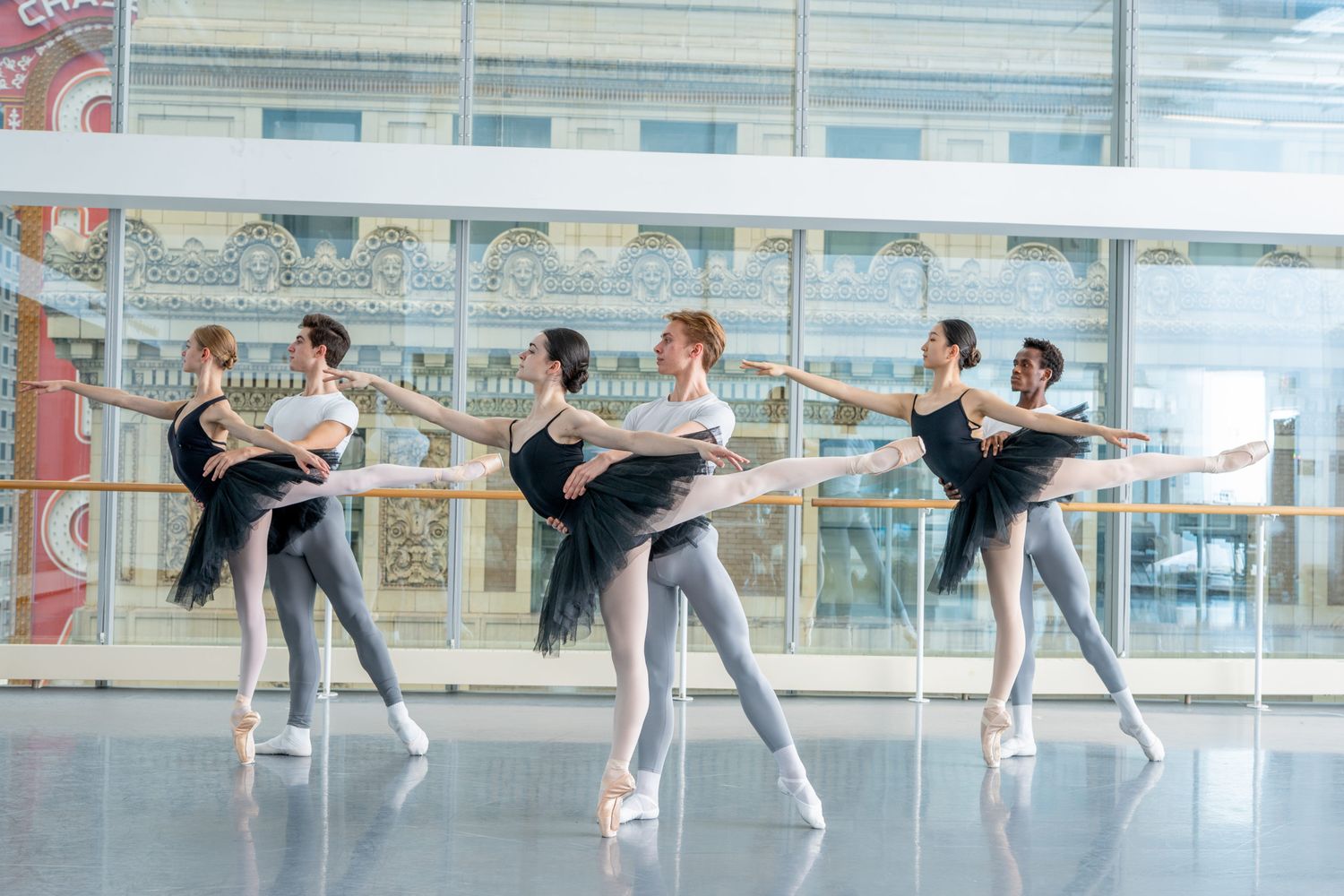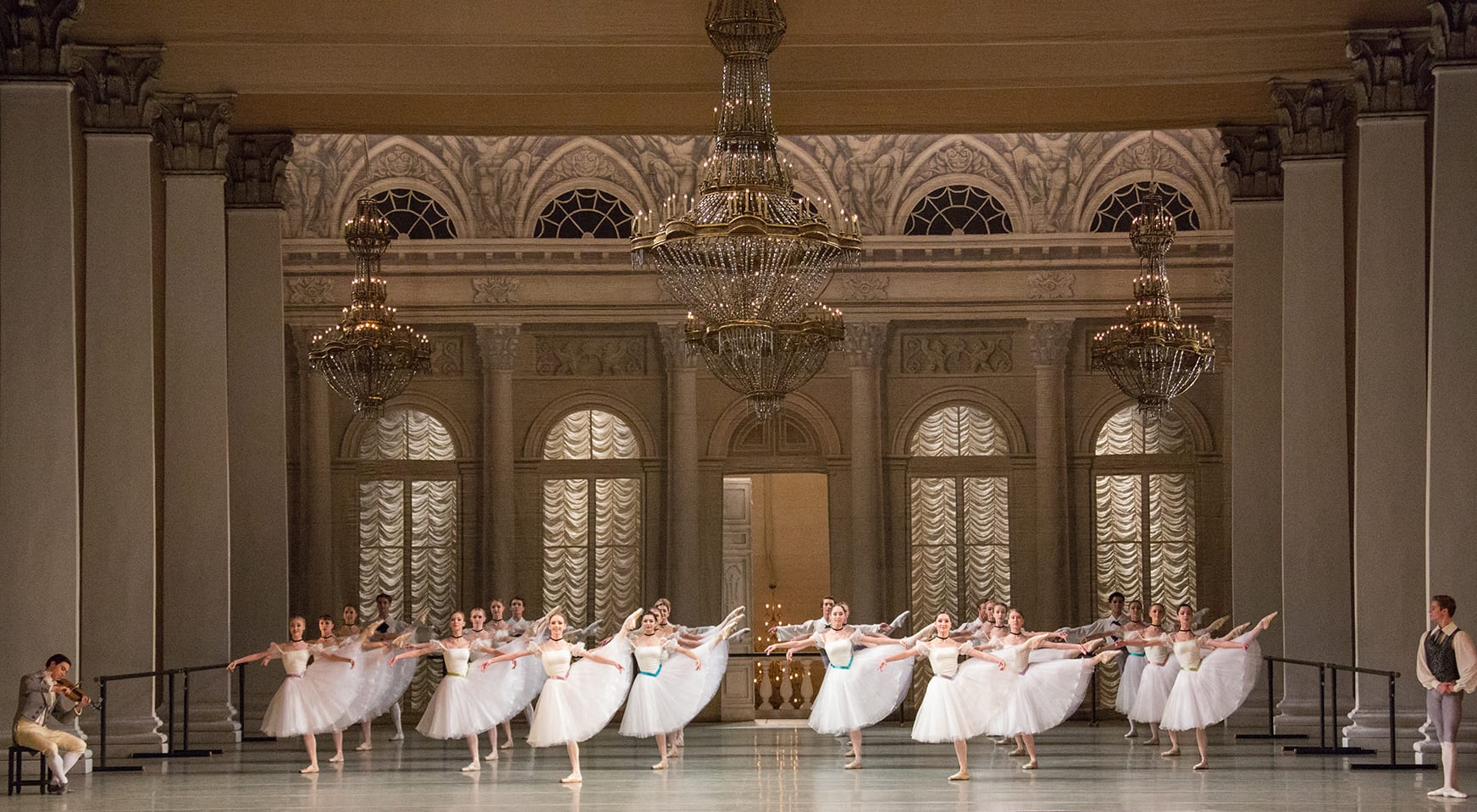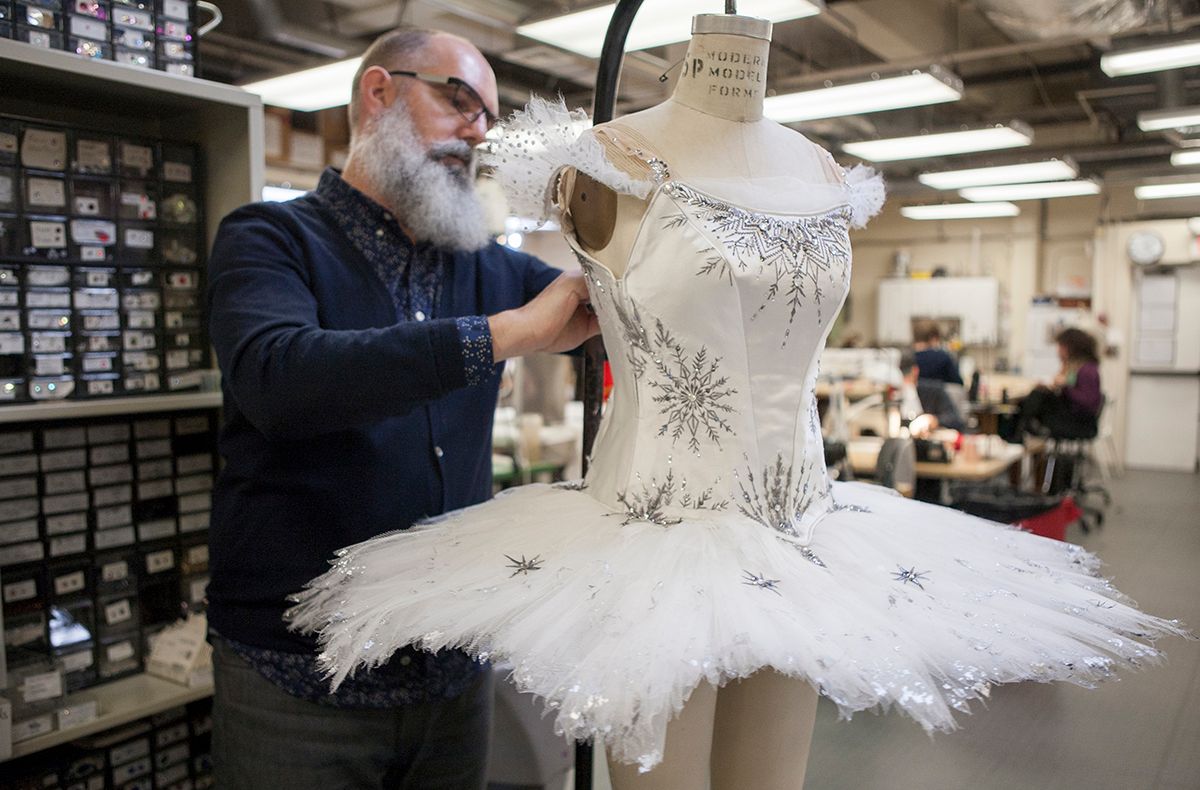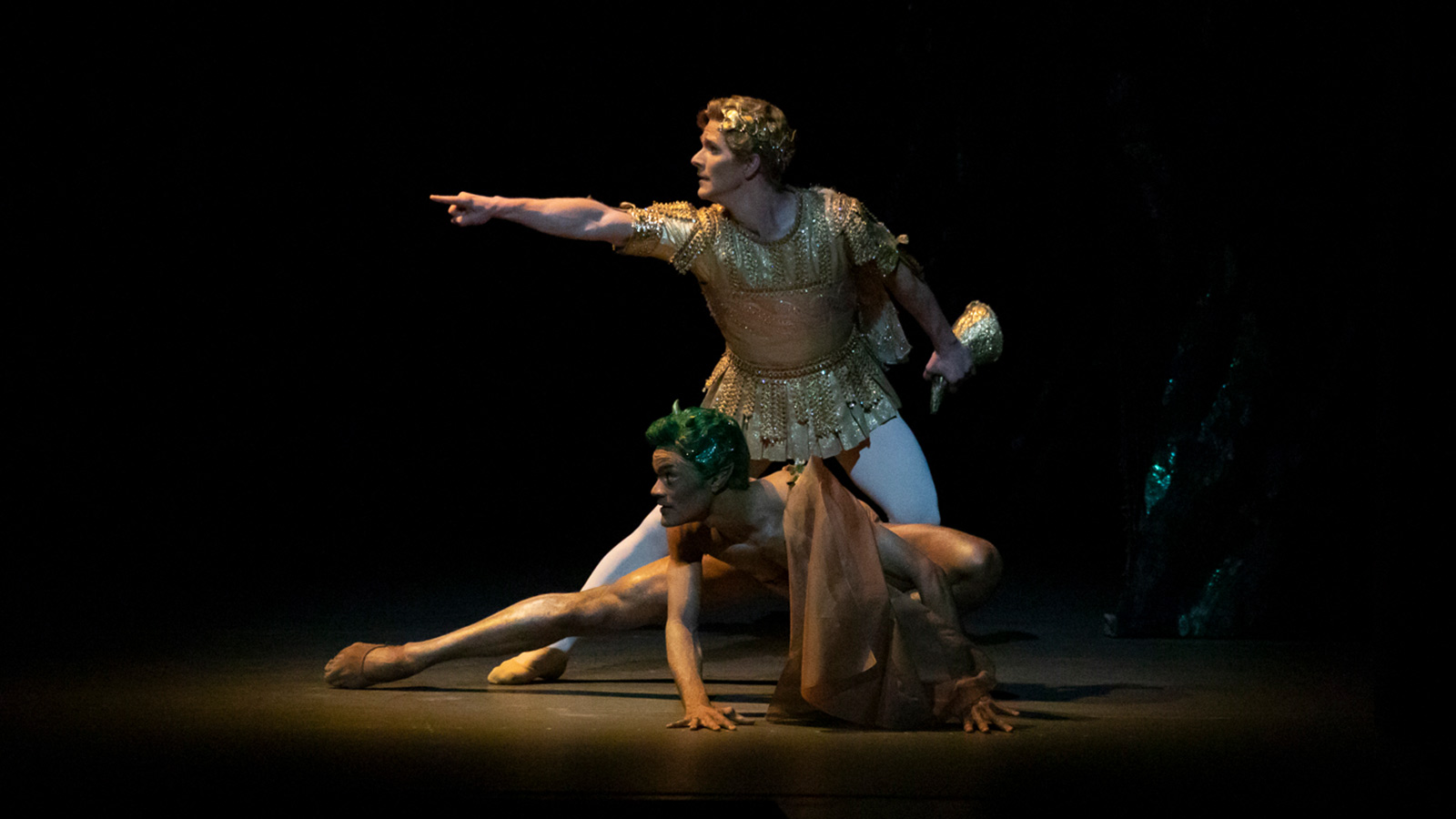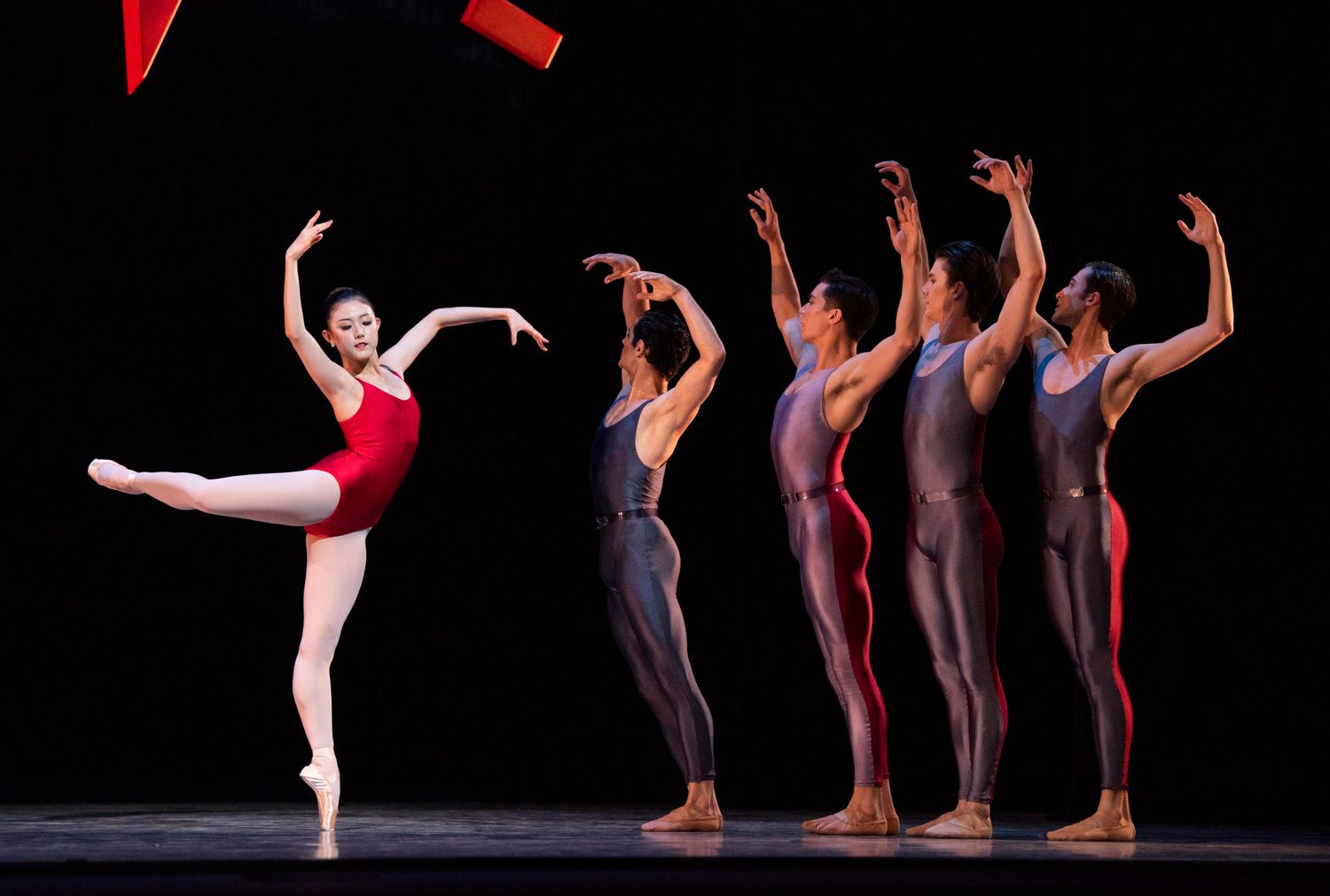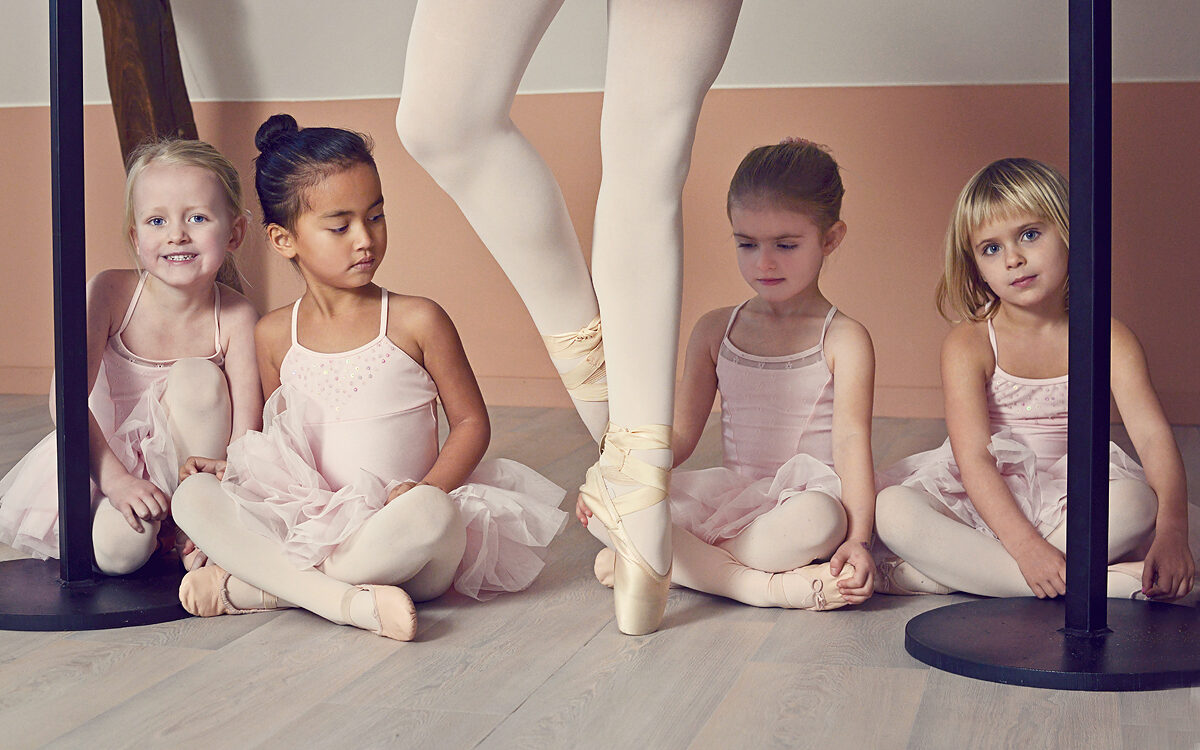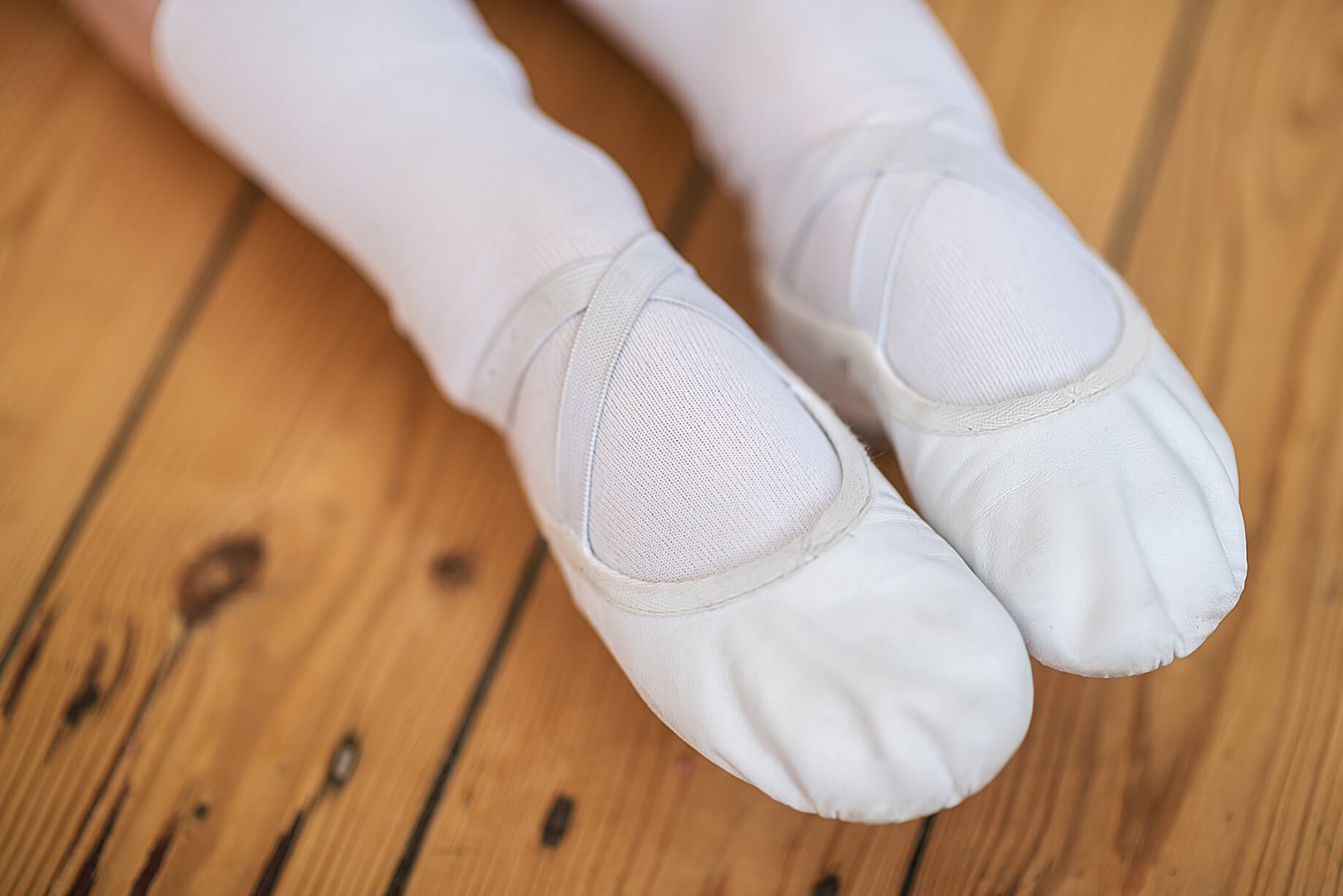Home>Events & Info>Ballet>Where Ballet Originated


Ballet
Where Ballet Originated
Published: January 10, 2024
Discover the origins of ballet, a timeless art form that has captivated audiences for centuries. Discover its rich history and significance in the world of dance.
(Many of the links in this article redirect to a specific reviewed product. Your purchase of these products through affiliate links helps to generate commission for AudioLover.com, at no extra cost. Learn more)
Table of Contents
Introduction
Ballet is a classical dance form that has captivated audiences for centuries with its grace, elegance, and storytelling. It originated in the lavish courts of Italy and France during the Renaissance period and has since evolved into a highly technical and expressive art form. Whether pirouetting on pointe shoes or leaping through the air, ballet dancers possess a unique blend of strength, flexibility, and artistry.
Steeped in tradition and history, ballet holds a significant place in the performing arts. Its roots can be traced back to the lavish court spectacles of the Italian Renaissance, where dance was an integral part of the entertainment. However, it wasn’t until the 17th century that ballet truly began to take shape and develop its distinctive style.
Throughout its history, ballet has undergone various transformations, influenced by cultural shifts and individual choreographers. From the court of Louis XIV in France to the grand stages of Russia, ballet has thrived and evolved, spreading its influence across the globe.
In this article, we will delve into the origins and evolution of ballet, exploring how it has developed into the mesmerizing dance form we know today. From its ancient roots to the innovations of modern choreographers, we will uncover the fascinating journey of ballet and its impact on the world of dance.
Ancient Origins of Ballet
The beginnings of ballet can be traced back to the Renaissance period, where dance was an integral part of courtly entertainment. However, the roots of ballet can be found even further back in ancient cultures.
Ancient civilizations such as the Egyptians, Greeks, and Romans had their own forms of dance, often incorporating it into religious rituals and ceremonies. These ancient dances laid the foundation for the artistic expression and physicality that would eventually become ballet.
One of the earliest recorded dance forms resembling ballet is the dance of the ancient Greeks. The Greeks believed in the power of dance to express emotions and tell stories, and their dances were often accompanied by music and performed in elaborate costumes.
Fast forward to the Italian Renaissance in the 15th and 16th centuries, where ballet began to take shape in the courts of the nobility. The prominent figure of Catherine de’ Medici, an Italian noblewoman who became the Queen of France, played a pivotal role in the development of ballet.
Upon her marriage to King Henry II of France, Catherine brought her passion for dance to the French court. She commissioned lavish ballet performances for royal events, which influenced the growth of ballet as an art form.
This period also saw the emergence of ballet as a form of entertainment in its own right. The court ballets, characterized by elaborate costumes, intricate choreography, and storytelling through dance, laid the groundwork for the future of ballet.
It was during this time that ballet masters such as Pierre Beauchamp began to codify the techniques and steps that would become the foundation of classical ballet. These early ballet masters developed the five basic positions of the feet and established the principles of turnout and lightness in movement that are still fundamental to ballet today.
As ballet continued to evolve and gain popularity, it would eventually find its true home in the grand palaces of France, setting the stage for the next chapter in its history.
Renaissance Influence on Ballet
The Renaissance period in Europe, spanning from the 14th to the 17th century, had a profound impact on the development of ballet. During this time, there was a renewed interest in the arts, literature, and culture, which influenced the evolution of dance.
One of the key factors in the rise of ballet during the Renaissance was the patronage of the nobility. Wealthy and powerful individuals, such as Catherine de’ Medici in France, provided the financial support needed for the growth of the art form.
Ballet, initially known as “court dance,” became an integral part of courtly entertainment. The nobility sought to showcase their wealth and sophistication by organizing elaborate spectacles, which included music, poetry, and dancing.
These courtly performances often featured lavish costumes, intricate choreography, and storytelling through dance. Ballet was no longer just a series of steps; it became a vehicle for expressing emotions and conveying narratives.
The French court, in particular, played a significant role in the development of ballet during the Renaissance. It was in France that ballet began to take on its distinctive characteristics and lay the groundwork for the ballet we know today.
Ballet masters, such as Pierre Beauchamp, codified the techniques and steps that would become the foundation of classical ballet. They developed the five basic positions of the feet, emphasized the importance of turnout, and refined the art of partnering.
Furthermore, the French court established the Académie Royale de Danse in 1661, which was the first ballet school in the world. This institution played a crucial role in training dancers and further advancing the art form.
During the Renaissance, ballet also became intertwined with other art forms. It was often performed as part of theatrical productions, with dancers sharing the stage with actors and musicians. The collaboration between dancers, composers, and playwrights resulted in the creation of narrative ballets, where stories were told through movement and music.
The Renaissance period marked a significant shift in the perception and appreciation of ballet. It went from being a courtly amusement to a respected art form that required technical skill, artistic expression, and a deep knowledge of musicality.
The influence of the Renaissance on ballet laid the foundation for the development of classical ballet in the following centuries, setting the stage for the emergence of iconic ballets, renowned dancers, and the establishment of ballet as a professional art discipline.
Development of Ballet in France
France played a pivotal role in the development and evolution of ballet as an art form. It was in the grand palaces of France that ballet began to flourish, reaching new heights of refinement and sophistication.
One of the key figures in the development of ballet in France was King Louis XIV, often referred to as the “Sun King.” Louis XIV was an avid supporter of the arts and had a great passion for dance. His influence elevated ballet to new levels of importance and established France as the center of balletic innovation.
In 1661, Louis XIV founded the Académie Royale de Danse, the world’s first ballet school. This institution provided formal training for dancers and set a high standard of technique and artistic expression. It was here that the principles of ballet began to be codified and taught systematically.
The French court ballets of the 17th and 18th centuries became renowned for their opulence and artistic excellence. These ballets were elaborate productions that combined music, dance, elaborate sets, and exquisite costumes.
Choreographers such as Jean-Baptiste Lully and Pierre Beauchamp revolutionized ballet in France. Lully, a composer and dancer himself, collaborated with playwright Molière to create influential ballets comiques, blending dance, music, and storytelling. Beauchamp, as the premier danseur of the court, contributed to the codification of ballet technique.
Under Louis XIV’s patronage, ballet became an essential part of court culture. The king himself was an accomplished dancer and often performed in the court ballets. He even founded his own company, the Académie Royale de Musique, which eventually became the Paris Opera Ballet, the oldest national ballet company in the world.
The French style of ballet that emerged during this time was characterized by its elegance, precision, and emphasis on technique. It emphasized graceful movements, lightness, and a refined aesthetic. This style of ballet, known as “danse d’école,” had a profound impact on the development of ballet across Europe.
Additionally, the French court ballets laid the foundation for the narrative ballets and ballets d’action that became popular in the 18th century. These ballets incorporated storytelling and dramatic elements through dance, highlighting the expressive capabilities of the art form.
France’s influence on ballet extended beyond its borders. Dancers and choreographers from all over Europe flocked to France to study and be a part of the thriving ballet scene. French ballet masters and teachers, such as Auguste Vestris and Jean-Georges Noverre, spread their knowledge and techniques, shaping the future generations of dancers.
The development of ballet in France during this period marked a significant turning point in the history of the art form. The French style and technique became the standard for ballet throughout Europe, and the legacy of French ballet continues to be celebrated and revered to this day.
The Birth of Classical Ballet
Classical ballet, as we know it today, emerged during the 19th century as a distinct and refined art form. It was during this time that the foundations of ballet technique were solidified, and iconic ballets were created that continue to be performed and cherished worldwide.
One of the key figures in the birth of classical ballet was the choreographer and ballet master Jean-Georges Noverre. Noverre advocated for a more natural and expressive style of dance, moving away from the formalism of the court ballets. His ideas laid the groundwork for ballet as a narrative art form, where storytelling and emotion took center stage.
Another crucial development during this period was the evolution of ballet technique. Ballet masters such as Carlo Blasis and August Bournonville further refined the principles of turnout, pointed toes, and fluidity of movement. These technical advancements allowed for more intricate and demanding choreography.
Classical ballet also saw the rise of legendary ballet dancers who became synonymous with the art form. Marie Taglioni, considered the first ballerina of the Romantic era, captivated audiences with her ethereal and weightless movements. Her iconic performance in “La Sylphide” in 1832 showcased the delicate and ethereal qualities that would come to define the Romantic ballet era.
The Romantic era of ballet, which spanned from the 1830s to the 1850s, introduced new themes and emotions into ballet productions. Ballets such as “Giselle” and “La Bayadère” explored supernatural and mythical worlds, allowing for intense dramatic portrayals and showcasing the technical prowess of the dancers.
Amidst this artistic and technical revolution, the music of ballet also evolved. Composers such as Pyotr Ilyich Tchaikovsky and Adolphe Adam composed the iconic scores for some of the most beloved classical ballets, including “Swan Lake,” “The Nutcracker,” and “Giselle.” These compositions became integral to the ballet experience, enhancing the storytelling and capturing the essence of each ballet’s themes and emotions.
Classical ballet’s popularity spread across Europe and beyond, with ballet companies popping up in major cities and theaters. The Bolshoi Ballet in Russia and the Royal Ballet in London are just a couple of the renowned companies that trace their roots back to this era.
Today, classical ballet continues to be revered and performed worldwide. The timeless beauty of the choreography, the exquisite music, and the artistry of the dancers make classical ballet a captivating and enduring art form that continues to inspire audiences of all ages.
The birth of classical ballet marked an era of innovation and artistic expression, shaping the future of ballet and laying the foundation for the breathtaking performances and enduring masterpieces we enjoy today.
Ballet Developments in Russia
Russia has played a pivotal role in the development and evolution of ballet as an art form. It was in Russia that ballet experienced significant transformations, making it renowned for its technical prowess, dramatic intensity, and innovative choreography.
The roots of ballet in Russia can be traced back to the 18th century when Peter the Great brought the art form to the Russian court. However, it was during the 19th century that ballet in Russia truly flourished and established its unique identity.
One of the most important figures in Russian ballet was Marius Petipa, a French choreographer who became the balletmaster of the Imperial Ballet in St. Petersburg. Petipa’s collaboration with composers such as Pyotr Ilyich Tchaikovsky resulted in iconic ballets, including “Swan Lake,” “The Sleeping Beauty,” and “The Nutcracker.”
Petipa’s choreography was characterized by intricate footwork, grand pas de deux, and awe-inspiring ensemble dances. His ballets showcased the technical virtuosity of the dancers, demanding precision, strength, and artistry.
Another significant development in Russian ballet was the establishment of the Vaganova method, a ballet training system formulated by Agrippina Vaganova. This method emphasized precise technique, clean lines, and expressive storytelling. It has become the foundation of ballet training in Russia and has had a profound influence on ballet pedagogy worldwide.
During the 20th century, Russia further solidified its reputation as a ballet powerhouse. The Russian Ballet became internationally acclaimed, attracting talented dancers and choreographers from all over the world.
Sergei Diaghilev, the founder of the Ballets Russes, brought Russian ballet to the global stage. He collaborated with groundbreaking choreographers such as Michel Fokine and Vaslav Nijinsky to create avant-garde ballets that pushed the boundaries of traditional ballet. The Ballets Russes revolutionized ballet by challenging conventions and presenting innovative works of art.
The legacy of Russian ballet is also closely tied to the iconic dancers it produced. Legendary names such as Anna Pavlova, Vaslav Nijinsky, Galina Ulanova, and Rudolf Nureyev have left an indelible mark on the world of ballet, captivating audiences with their extraordinary talent and artistry.
To this day, Russia continues to produce some of the finest ballet companies and dancers in the world. The Bolshoi Ballet and the Mariinsky Ballet are revered for their technical excellence and dynamic performances.
Ballet remains an integral part of Russian culture, with its influence extending beyond the stage. The Russian method of ballet training is still highly regarded, and the country’s rich ballet heritage continues to inspire generations of dancers and choreographers.
Russian ballet’s commitment to technical precision, dramatic storytelling, and artistic innovation has solidified its place as one of the most influential and respected ballet traditions in the world.
Ballet Spreads across Europe and the World
During the 19th and 20th centuries, ballet expanded its reach and influence beyond its European origins, spreading across the globe and captivating audiences worldwide. The art form underwent significant transformations and adaptations as it found new homes and merged with diverse cultural traditions.
As ballet gained popularity and recognition, European ballet companies embarked on international tours, showcasing their artistry and captivating audiences in cities such as New York, London, and Paris. These performances introduced audiences to the beauty and grace of ballet, fueling a global fascination with the art form.
In the 20th century, ballet companies from Russia, such as the Ballets Russes, exported the Russian ballet tradition and its innovative vision to audiences in Europe and the United States. The Ballets Russes, under the direction of Sergei Diaghilev, became a transformative force in the ballet world, introducing groundbreaking collaborations between ballet, music, and visual arts.
The spread of ballet also coincided with various cultural exchanges and collaborations, leading to the emergence of unique blends of ballet styles. For instance, in the United States, ballet merged with African American dance traditions, giving rise to a new form known as jazz ballet or American ballet. Choreographers such as George Balanchine infused ballet with a distinctly American flair.
Similarly, in countries like India and Japan, ballet merged with traditional dance forms, resulting in the creation of new genres such as Bharatanatyam-inspired ballet in India and Butoh ballet in Japan. These cultural fusions added new dimensions to the art form, enriching its repertoire and extending its global reach.
With the advent of film and television, ballet was further popularized and brought to a broader audience. Iconic productions such as “The Red Shoes” and televised performances from esteemed companies reached viewers in the comfort of their homes, fostering a deep appreciation for ballet as a visual and emotional spectacle.
Today, ballet companies can be found in nearly every corner of the world, from the classical companies of Europe and the United States to emerging companies in Asia, Africa, and Latin America. The globalization of ballet has allowed for cultural exchange and the sharing of diverse artistic perspectives.
Furthermore, the internet and social media have become influential platforms for ballet, enabling performances to be shared and accessible to audiences worldwide. Ballet enthusiasts can now witness performances from different companies and discover new talents with just a click.
The spread of ballet across the world has led to the nurturing of local talent, the diversification of choreographic styles, and the celebration of diverse cultural expressions. The universal appeal of ballet’s beauty and artistry continues to inspire and unite people across continents and cultures.
Modern Ballet: Innovations and Contemporary Styles
Ballet, as an art form, continues to evolve and adapt to the changing times. In the modern era, ballet has seen a burst of innovation and experimentation, pushing the boundaries of traditional aesthetics and embracing new styles and concepts.
One notable development in modern ballet is the exploration of abstract and contemporary choreography. Choreographers like George Balanchine revolutionized ballet by introducing neoclassical and abstract movements, breaking away from traditional narrative storytelling. Balanchine’s emphasis on speed, musicality, and technical virtuosity opened the door to a new era of ballet expression.
Contemporary ballet, a genre that emerged in the late 20th century, combines elements of classical ballet with modern dance techniques and other movement forms. It explores diverse themes, movement qualities, and collaborations with innovative composers and visual artists. Choreographers such as William Forsythe and Crystal Pite have made significant contributions to the development of contemporary ballet, creating works that delve into the complexities of human emotions and societal issues.
Another aspect of modern ballet is the inclusion of new technologies and multimedia elements. Projections, digital effects, and interactive visuals have been integrated into ballet performances, creating immersive experiences for both dancers and audiences. This fusion of technology and ballet opens up new possibilities for storytelling, visual aesthetics, and audience engagement.
Diversity and inclusivity have also become pivotal concerns in modern ballet. There is a growing movement to address the lack of representation and to challenge traditional notions of body types and gender roles on stage. Ballet companies are working towards greater inclusivity, promoting diversity in casting, and supporting choreographers of different backgrounds.
Additionally, modern ballet has expanded to embrace interdisciplinary collaborations. Dancers are collaborating with artists from different disciplines such as fashion, music, and visual arts, leading to cross-pollination of creative ideas and innovative productions.
The rise of contemporary ballet companies and festivals dedicated to showcasing innovative works has provided platforms for emerging choreographers and creative voices. These platforms encourage experimentation and the exploration of new movement vocabularies, keeping ballet relevant and vibrant in the modern era.
Ultimately, modern ballet embodies a spirit of evolution, constantly reinventing itself to reflect the zeitgeist of each era. It continues to adapt and respond to societal shifts while maintaining a deep respect for the rich traditions and techniques that form its foundation.
As the boundaries between genres blur, modern ballet remains a dynamic and ever-evolving art form, showcasing the endless possibilities and creative expressions that continue to captivate audiences around the world.
Conclusion
Ballet, with its origins in the courts of Europe, has transformed from a courtly entertainment to a globally celebrated art form. From its ancient roots to the birth of classical ballet, the artistry, technique, and storytelling of ballet have captivated audiences for centuries.
Throughout its history, ballet has undergone significant developments, influenced by the Renaissance period, the growth of the French court ballet, the rise of classical ballet, and the expansion of ballet across Russia and the world. Ballet has evolved and adapted to the changing times, embracing new styles, choreographic techniques, and diverse cultural influences.
From the classical ballets of the 19th century to the innovations of contemporary ballet, the art form has continued to push boundaries and challenge conventions. Ballet has incorporated new technologies, explored abstract and contemporary choreography, and embraced interdisciplinary collaborations.
Ballet’s reputation as a highly technical and expressive dance form relies on the dedication and talent of the dancers, the creativity of the choreographers, and the commitment of ballet companies to excellence. The legacy of ballet is reflected in the iconic works and legendary dancers who have left an indelible mark on the history of the art form.
Today, ballet continues to inspire and captivate audiences worldwide. It remains a symbol of grace, elegance, and emotional expression. Ballet’s ability to tell stories, convey emotions, and captivate through movement enables it to transcend language and cultural barriers, connecting with audiences on a universal level.
As ballet evolves and embraces the diversity and inclusivity of the modern world, it continues to innovate and redefine itself while staying true to its rich traditions and foundations. The future of ballet is a journey of exploration, creativity, and collaboration, ensuring that this timeless art form remains a vital and enchanting part of the cultural landscape for generations to come.

